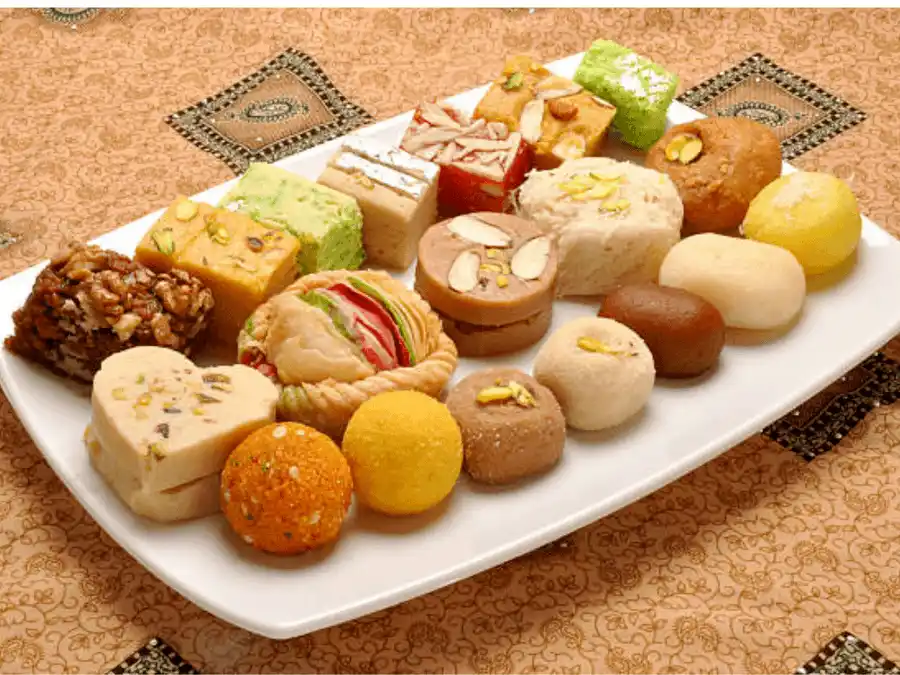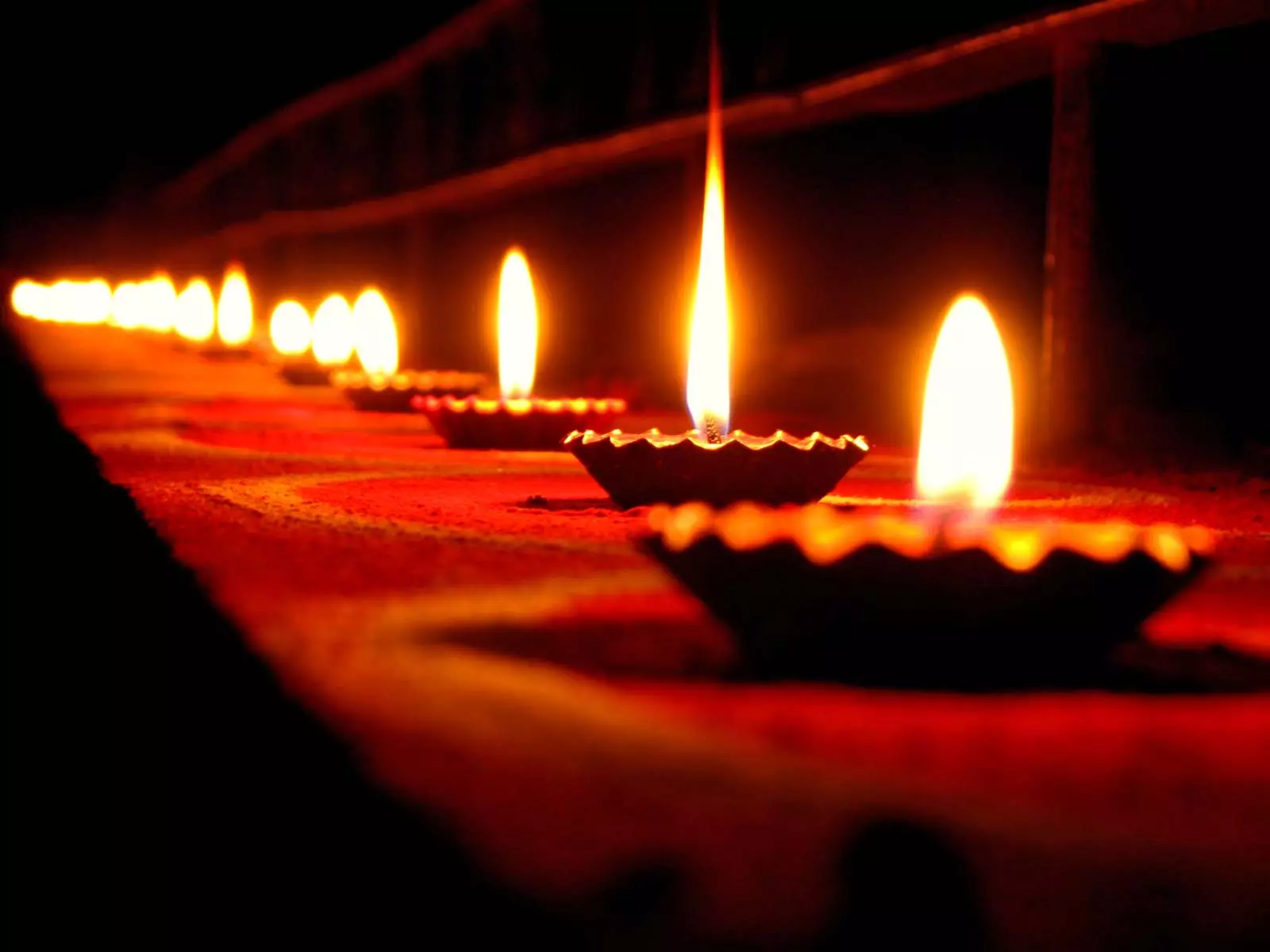Before the generic laddoo, barfi, fusion chocolate-, coffee-, raspberry-, blueberry-laced mithai that we are now forced to confront on festivals like Diwali, Indian mithai was a unique tradition of sweets rooted both in seasonality and provenance.
Every region had its own special mithai, made not just on special occasions but specific to changing seasons. Mithai was sought after by connoisseurs from specific towns, specific shops known for the dexterity and skill of its karigars (craftsmen), the specialist cooks who had likely learnt their craft from ancestors or spent long years in the trade polishing it.
So, you had Sandila ke laddoo, balushahi from Sitamarhi, Kozhikode halwa, gazak from Meerut, Malai ki gilori from Ram Asrey in Lucknow, shaped like a gilori of betel leaves but made from the thick top layer of balai, or clotted cream in Nawabi parlance. These halwai wrought confections were different from homemade sweets like Khaja, Anarse, Payesh, Pithe. But which mithai was consumed also depended on changing seasons: Feni or ghewar for monsoons, heavy daal based halwa in winter, light milky kalakand for spring and Holi, you get the point.
200+ year legacy!
Ram Asrey’s famous Malai Paan 😋🤤♥️
Visited The oldest shop of them in Chowk! #sweettooth #SweetTooth #Lucknow #UttarPradesh #food #foodie #foodblogger pic.twitter.com/a0Jsf2I8uP
— அஷ்வின் காந்தி/अश्विन गांधी/Ashwin Gandhi 🇮🇳 (@PantryCar) October 9, 2021
Homemade mithai was occasion led to many a times: Brides would go to their new marital homes with boxes of tuck that included things like mitha pakwan, beautifully shaped cakes of fried wheat flour dipped in sugar syrup. In my UP Kayasth home, the edges were pinched into pretty patterns, and skilled halwais specialising in these wedding confections were sought out for the finesse of their handiwork. In Bihar, this confection that was long lasting and could be eaten till months later took the form of flaky biscuit-like khaja, and is still called by different names in other parts of the subcontinent, including what most of you may be familiar with– “meethi mathi” (sweet biscuit, loosely translating).
The precursor to this wheat sweet was the khisti, or a “brick like” sweet cake made of flour, sugar and ghee known in India since the Delhi Sultanate, from the 12th-13th century, and no doubt borrowing from an earlier tradition of papdi/mathri making.
But the biggest festival of mithai was, and remains, the festival of lights. Homemade Diwali mithai of Delhi and UP included Anarse, painstakingly made with rice ground to a paste, mixed with warming ingredients like sesame, as well as deevle, shaped like diyas or lamps. Both are elusive now.
HAPPY DIWALI!! These are Anarse, a gorgeous sweet made with fermented rice flour, jaggery, poppy seeds and ghee. Swipe right to see the stages. They were my dad’s favourite Diwali sweet and my mum would lovingly make them. 1/3 pic.twitter.com/HG7OvIzbm6
— Prof Priya Deshingkar (@priyadeshingkar) October 23, 2022
In their place, it dismays me to see the deluge of sweets that arrives at our door at the beginning of the festive season– mithai that is colourful, sometimes inventive but all too often just generic, bought from brands and chains that no longer employ traditional skilled karigars, and where the cooks themselves may never have tasted high-quality mithai of yore.
Mithai, after all, is not just something cloyingly sweet, stodgy and made of khoya. Regional and seasonal mithai from halwai shops known for their quality came with a nuance that copies or reinterpretations lose when skill is lost. But this dying art of mithai making in India also has to do with a loss in patronage.
If you go to Cremona, a small town in northern Italy, known for its cheese and violins, you’d be directed to seek out its torrone, a local nougat. In Scotland, it would be shortbread, in Turkey, the baklava… why is it then necessary for us to seek Bengali mithai in south Delhi? Or, the ubiquitous kaju katli that tastes of nothing of cashew everywhere in India in the name of festive treats?
https://twitter.com/Punjab_INT/status/1141392241996554240?s=20&t=Pl0RQp3kCam5_4lykrnrOg
Craft flourishes when there is patronage. Indian mithai, despite how much has been floating all around, is steadily losing its context and grounding because old craftsmen who had perfected perhaps just one recipe over a lifetime no longer exist and younger generations have neither the inclination nor lure to carry forward the legacy. After all, much of the audience today can no longer distinguish between fine nugdi/motichoor laddoo with tiny pearl-like boondi scented with saffron from all the generic stuff floating around in pretty luxury boxes. If many younger people shy away from mithai, it is probably because they have only tasted mediocrity.
To change this, we can perhaps start focussing on provenance and seasonality in mithai– acquainting ourselves with the taste of our cities, the mithais old halwai shops were known for, and championing these.
In Delhi, till the 1950s-60s, two mithais synonymous with Diwali were the balushahi and sohan halwa. Both were likely the inventions of the late 18th century. Both suited to north Indian winters—with ghee, flour and nuts warming up the body. Ghantewala, the famous halwai shop, established in 1790 in Chandni Chowk, in the reign of Shah Alam II, was famous for both confections, and even today, old Delhi mithai shops such as Chainaram have these as winter specials.
#KarachiHalwa from the Iconic #ChainaRam Delhi 🥹🥹❤️❤️ pic.twitter.com/Kq3WesX4S9
— नि_shu (R_A_K_S_H_I_T_A) (@deep_tee_) October 30, 2022
Balushahi, also known as the Badushah in southern India, where it is popular too, is a late Mughal-era invention—its name suggests that—and may have been carried south with the Marathas, who started maintaining a presence in Delhi in the early 18th century. The Maratha empire at its peak stretched from Peshawar to Tamil Nadu.
Often described as a “donut”, the Balushahi, however, is not a donut. It gets its flaky texture from the use of maida, the fine flour that started coming into use as oil-powered milling gave finer flour for the rich post the late 1800s, as well as from use of ghee, as shortening, and as a medium for frying. At its heart, the Balushahi is a reinvention of the khisti/papdi tradition, using the new material, maida, and rich ingredients to become a beloved winter sweet.
♥️ Balushahi ♥️
My Favourite n yours?? pic.twitter.com/xdZDpxwQZE
— Queen of Himachal (@himachal_queen) June 17, 2022
Sohan halwa, is another disappearing delicacy of northern India, and will forever be associated in my heart with Kipps’ Bareilly. Every winter, the thick, small, as hard as stones round cakes studded with almonds, cashews and melon seeds arrived from the Bareilly confectioner, courtesy my maternal grandparents. One box was meant to last the entire winter, and small chunks of the mithai were broken up post dinner to be nibbled at on cold evenings.
And iconic Kipps at Bareilly makes use of Success of Bareilly Ki Barfi pic.twitter.com/3g1pcShNgX
— Pravesh Bhardwaj (@AuteurPravesh) August 27, 2017
While the karigars who came up with this confection may have been from UP– “sohan” in Khari boli meaning “good looking”, this incredibly “good tasting” dessert seems likely to be an old Delhi invention. It reminds you of the nougat or toronne, which is made up of nuts, sugar (or honey), and egg whites, but in southern Spain looks uncannily similar to sohan halwa.
In Andalusia, from where the torrone/nougat spread to other centres of gastronomy in Europe, it was the result of the Moorish or Arabic influence.
Halwa in India came from Turkish influences too and so has a common ancestry. Sohan halwa meanwhile innovates upon grain, vegetable or sesame seed based halwas and uses cornflour instead.
Cornflour was invented for culinary use only in 1854 by Brown & Polson, in Paisley, Scotland and used as a thickening agent. Its use in an Indian mithai points to English influences in Delhi, the capital, as Mughal rule waned before finally ending in 1857.
19th century mithai makers tried their hand at a new ingredient brought via the Europeans—Sohan’s cousin, the gelatinous Karachi or Bombay halwa too, in fact, is made from corn flour but without ghee to harden the texture.
Meanwhile, another disappearing old Delhi halwa, the rather racist habshi halwa, named after its dark texture, was made from wheat, milk, sugar and nuts cooked for a long time on slow heat, resulting in rich caramelisation. Sohan halwa, more good looking than this confection, may have been an innovation on this, more pleasing both to the eye.
Which brings us to the point, if inventiveness has been the basis of the Indian mithai tradition for so long, why must we not go along with whatever fusion mithai next comes our way?
As with other Indian dishes deeply rooted in their sub-cultures, mithai can and inevitably will be innovated upon. But whether it is done expertly by people who know quality, understand context and are exposed to traditional tastes or in inelegant ways sans nuance depends not just on the skill and research of the craftsmen but on us patrons. How can you compare taste, the old and the new, the finesse of each, when you have never partaken of that particular feast?
Also Read: Breaking the stereotype: Why Indian food is not just about chillies


















